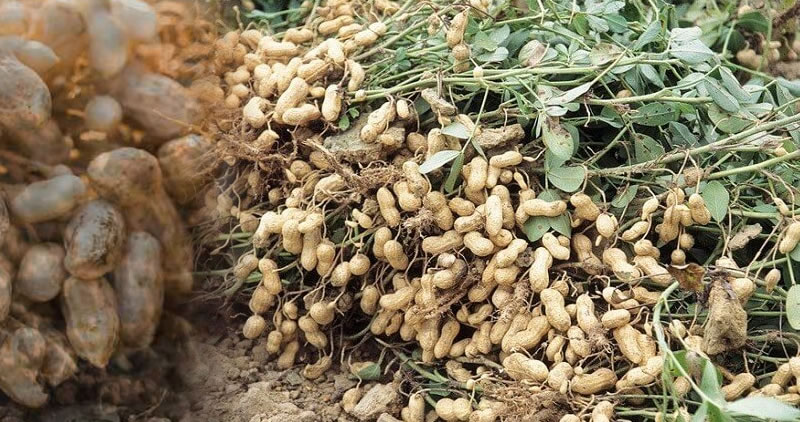- This topic is empty.
- AuthorPosts
- February 6, 2025 at 12:04 pm #554689

The Sahel, a region located between the Sahara Desert and the Sudanian Savanna, plays a significant role in the production of groundnuts, also known as peanuts.
Groundnut production in the Sahel is not only a vital part of the local diet but also a major source of income for rural communities. However, the challenges of climate change, erratic rainfall, and limited infrastructure have made groundnut farming and storage a complex task.
This article will explore the process of groundnut production, the difficulties farmers face in storage, and how these challenges can be addressed for better yields and economic sustainability in the Sahel.
1. Groundnut Production in The Sahel
Groundnut production in the Sahel is deeply embedded in the region’s agricultural practices. The soil, with its sandy texture and moderate fertility, is generally suitable for growing groundnuts.
However, the success of groundnut farming in the Sahel is often reliant on the rainy season, which can be unpredictable and vary significantly from year to year.
The region’s farmers typically plant groundnuts in the early part of the rainy season, with harvesting taking place towards the end of the season, around October.
The process of growing groundnuts in the Sahel involves planting seeds in well-prepared soil, followed by careful irrigation and weeding to ensure healthy growth.
Despite these efforts, the erratic weather patterns, particularly droughts, present significant risks to crop yield, making it essential for farmers to adapt to these unpredictable conditions.
2. Challenges of Groundnut Farming in The Sahel
The primary challenge in groundnut farming in the Sahel lies in the region’s vulnerability to climate change. Rising temperatures and reduced rainfall have disrupted the regular planting and harvesting cycles, leading to crop failures in some areas.
Soil erosion is another issue exacerbated by the lack of adequate water retention strategies, which in turn affects the quality of groundnut production.
Additionally, pests and diseases, including the notorious peanut aflatoxin fungus, pose serious threats to crop quality and yield. Limited access to modern farming techniques and inputs such as quality seeds, fertilizers, and pesticides compounds the problems farmers face.
These challenges highlight the need for more robust agricultural practices and support systems to ensure the resilience of groundnut production in the Sahel.
3. The Importance of Groundnut Storage
Effective storage plays a crucial role in maintaining the quality and availability of groundnuts after harvest. Once harvested, groundnuts are usually dried to reduce moisture content, which helps prevent spoilage and mold growth.
However, improper storage conditions, such as exposure to humidity, pests, and rodents, can lead to significant losses. In the Sahel, where storage infrastructure is often lacking, farmers struggle to store their groundnuts properly.
Traditional storage methods, such as using baskets or hanging bags, are commonly used but are highly susceptible to contamination and damage. As a result, a considerable portion of the harvest may be lost, leading to food insecurity and reduced income for farmers.
The challenge of storage is especially pronounced during surplus harvest periods when farmers face difficulty in managing the increased volume of groundnuts.
4. Innovations and Solutions for Better Storage
To address the storage challenges, there have been various innovations aimed at improving groundnut storage in the Sahel.
One of the most notable solutions is the introduction of improved storage facilities, such as sealed storage bags and airtight containers that protect crops from pests and moisture. Additionally, the use of metal silos has gained traction in several Sahelian countries, offering a more durable and effective way to store groundnuts over long periods.
Community-based storage programs, where farmers pool resources to construct better storage facilities, have also proven beneficial.
Beyond these solutions, education on proper storage practices is crucial to ensure that farmers are equipped with the knowledge to preserve their crops effectively. By enhancing storage capacity, farmers can reduce post-harvest losses and ensure a steady supply of groundnuts throughout the year.
5. The Way Forward for Groundnut Production and Storage in The Sahel
The future of groundnut production and storage in the Sahel hinges on both adaptive farming practices and investment in infrastructure. With the growing impacts of climate change, it is essential that farmers adopt climate-smart agricultural techniques such as drought-resistant varieties and water-efficient irrigation systems.
Additionally, there is a need for government and private sector investment in better storage solutions, as well as training for farmers to use these systems effectively. Improved access to credit and markets will also play a significant role in ensuring farmers can invest in the necessary tools and technologies for enhanced production and storage.
Collaborations between governments, NGOs, and local communities will be key to developing sustainable solutions to groundnut farming challenges in the Sahel.
In conclusion, groundnut production and storage in the Sahel are critical to both food security and economic stability in the region. Despite the many challenges posed by climate change, poor infrastructure, and limited resources, there is potential for growth and improvement.
By implementing innovative farming techniques, enhancing storage solutions, and investing in education and infrastructure, the Sahel can continue to produce groundnuts efficiently and sustainably, benefiting both farmers and the wider community.
Read Also: Complete Practical Guide on Organic Groundnut Farming
- AuthorPosts
- You must be logged in to reply to this topic.

